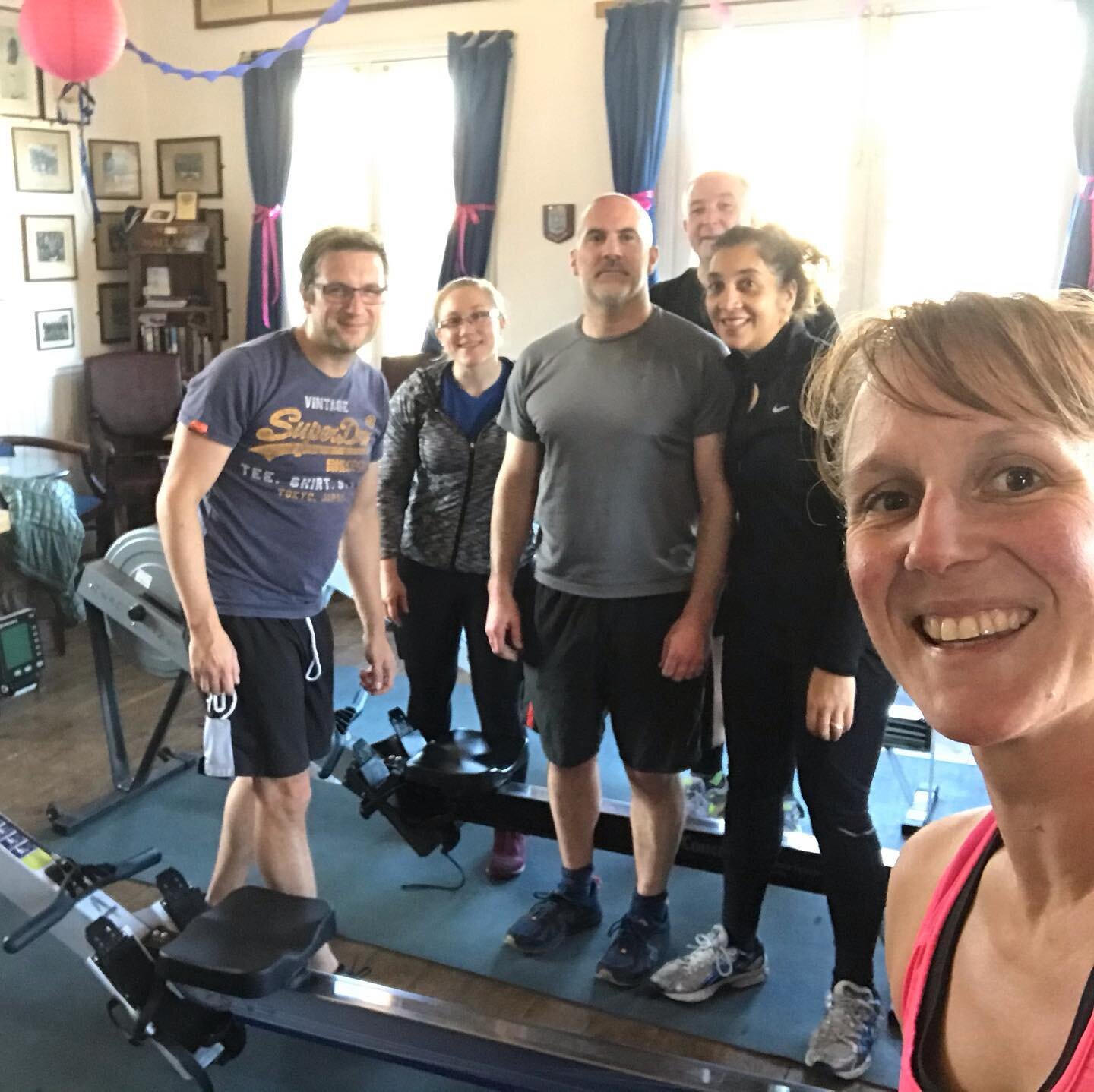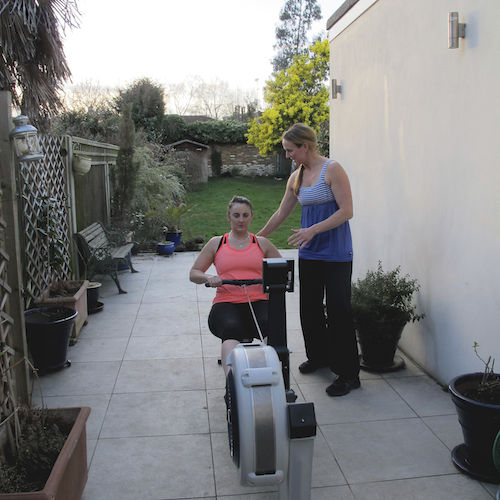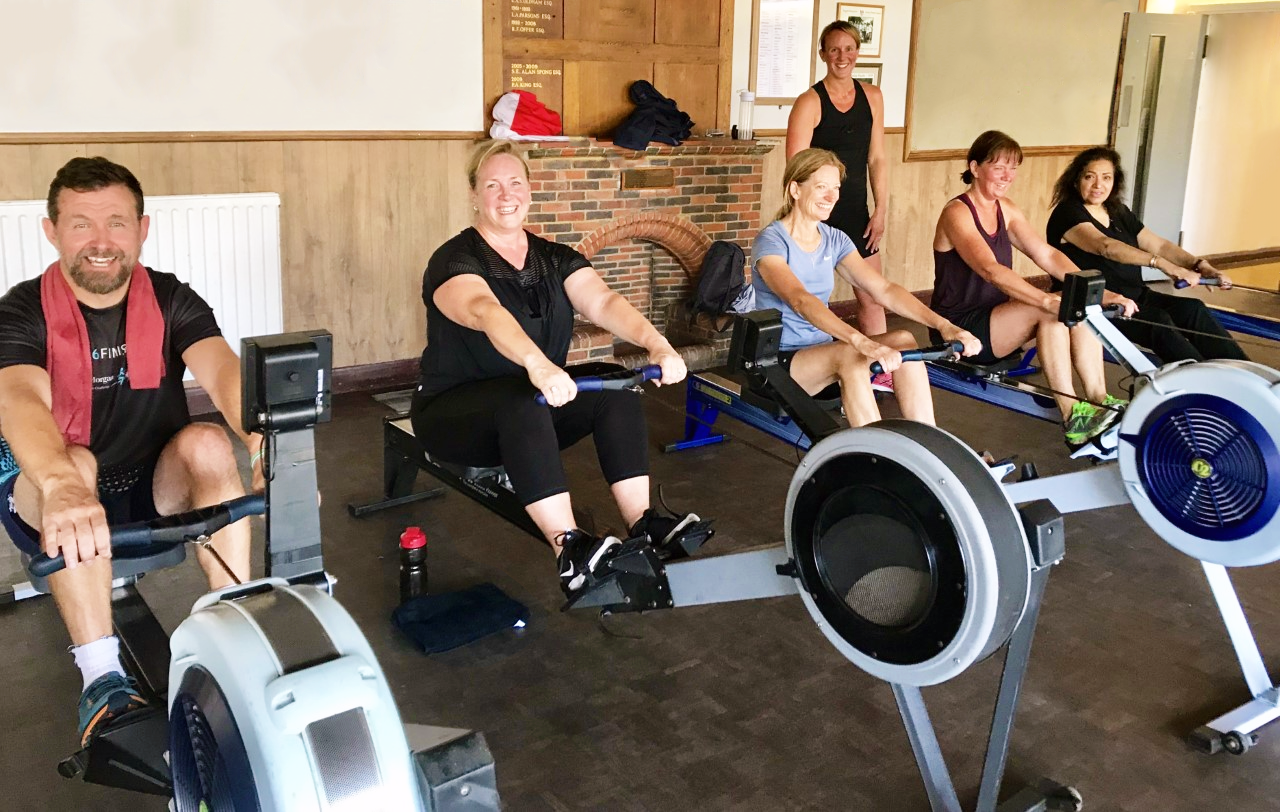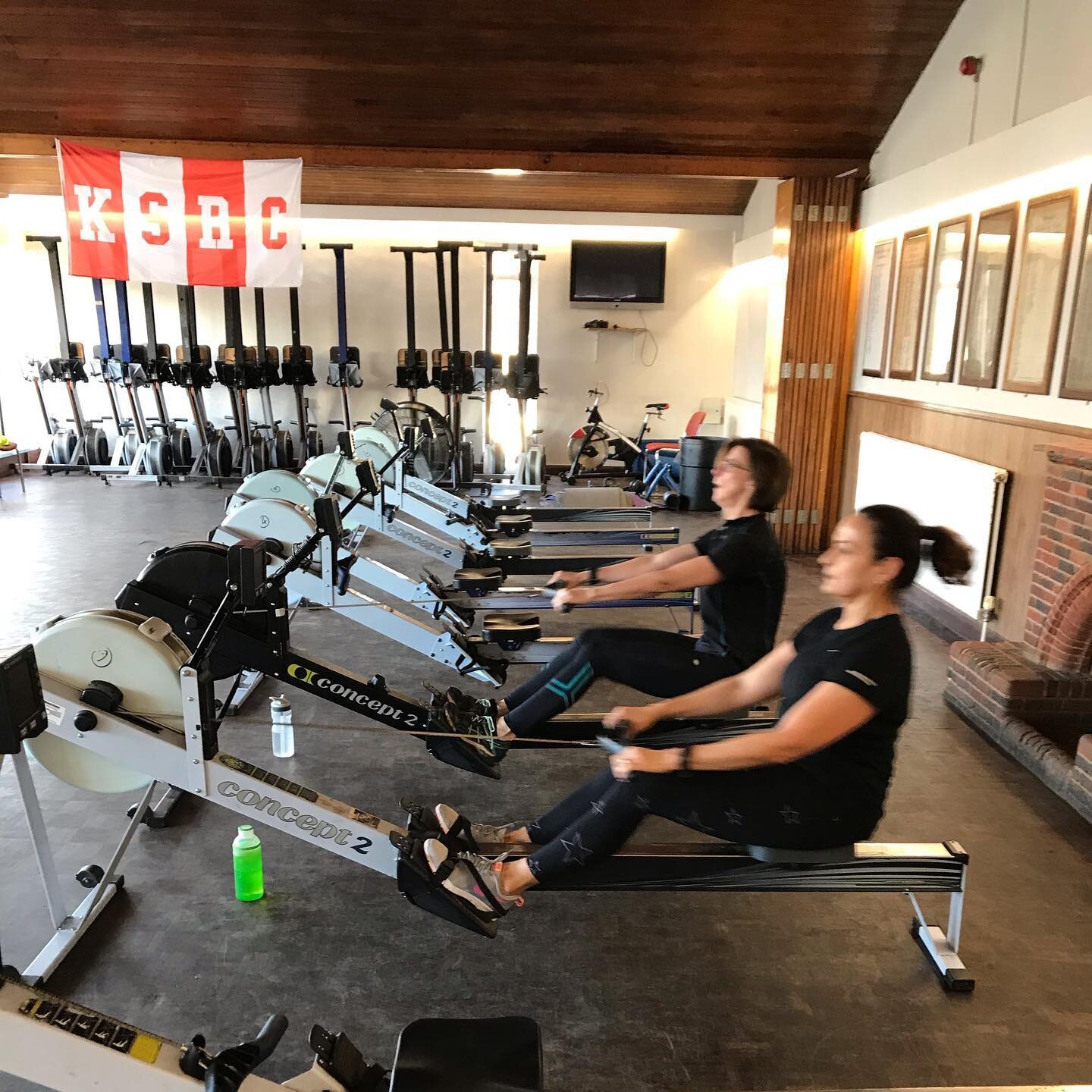Row with the Flow!
We believe in fitness for all, for life, and our Fluid Fitness rowers aged 11-80 prove that the rowing machine (ergo) is the perfect mode of exercise to enable this. Thousands of other rowers around the world would agree!
Fluid Fitness centres around indoor rowing because it provides a full-bodied workout this easily adaptable and inclusive of all fitness levels.
We also strongly believe in fitness being fun. One, because who doesn’t want to have more fun, and two, because unsurprisingly, the research shows if you enjoy fitness you’re more likely to stick with it and enjoy the long-term health benefits of consistent exercise. Want evidence of rowing actually being fun? Check out the grins across our website, none of them paid for, honest!
As an on-water rower, indoor rower, coach and personal trainer I’m also experienced in rowing-specific training off the ergo so that even if you don’t have access to ergo, Fluid Fitness can help you train like a rower and enjoy all the benefits that delivers, not least of which is a strong core and good posture – perfect for enjoying life beyond rowing too!
But isn’t indoor rowing just one big slog?!
It can be, and for some that’s fine. They jump on an ergo without specific coaching and achieve a workout they’re very happy with. However we find many come to us having rowed at the gym, worked hard and not been happy with the outcome and therefore considered it a slog they want to turn around. Often clients want technical coaching in order to be confident that they’re rowing in the right way, either to maximise their workout, to strengthen their body rather than injure it, or both. Others seek out coaching because they’ve heard about the benefits of rowing but don’t know where to start or are too self-conscious to work it out for themselves in front of others.
However, many put off pursuing rowing (erging) no matter their belief in its benefits, because of its’ reputation for being just the opposite of inclusive - not least because of how physically taxing it’s thought it must be.
This first post will break that perception down and our future posts will go on to provide a whole host of info, discussion and advice to reinforce my experience, and that of others that indoor rowing can be doable, beneficial AND fun for everyone!
Erging – an all or nothing exercise?
We’ve heard many an on-the-water rower, cross-fitter and general gym-goer curse the erg as a sweat-machine and a knackering soul-sapper. Perhaps it has an even worse reputation amongst those who commit everything to it, rating 36 strokes per minute before finding their lungs reach their limit way before their muscles do. What about that ‘full-body’ effect that is often raved about? What else can possibly be given in order to get more out of this supposed “wonder-machine”? How on earth can the erg be fun for someone to use who has no intention of testing their full lung capacity? To some extent the answer is about all or nothing. Except the ‘all ‘relates to focussing on technique and the ‘nothing’ relates to ignoring power (almost) entirely for at least the first coached session you have.
But how does that make erging a fun workout effective for improving fitness, or any other goal?
Row well, then row hard…if you choose.
While the fact that rowing is a full-body workout, (not just arms) is now pretty well known the extent of how technical it is still very often takes people by surprise. Most of our new rowers are actually blown away by what’s involved – and why wouldn’t they? After all, it’s such a repetitive motion that looks so easy when you watch it on a screen!
The truth is that to make it look so easy takes a huge amount of effort: if you think about it, if the ideal rowing stroke engages 85% of the body’s muscles every stroke, it is going to take the average person more than a few goes of watching YouTube instruction videos or receiving coaching to get it right. 85% is a lot of muscle to coordinate! I’ve been rowing for over 20 years and there’s always some aspect of erging I’m trying to hone. However, once you’ve got an appreciation of the depth of rowing technique (by-the-way the same principles apply to on and off-water rowing) you’ll grow an appreciation, or even enjoyment of erging being a sport in its’ own right. You’ll also be able to adapt any workout to an intensity that suits you, knowing all-the-while that you are rowing well and engaging those 85% of muscles properly, whether that’s at full effort or the equivalent of a ‘light paddle’.
That knowledge of what ‘rowing well’ is means you can also be confident in setting rowing goals that suit your lifestyle and fitness level, whether they include to row well, row hard, or both! That confidence is where the fun really starts – the indoor rowing world has exploded since lockdown started in 2020, and you can be as much a part of that as you wish! Row far, row fast, row for finesse, for fitness, or health, for peace of mind, or just ‘row with the flow’, whatever suits you on a certain day and is most fun for you.
A typical Fluid Fitness Class Progression / Adaptation from Beginner to Experienced Rower:
Once you’re open to the fact that to row well you will need to spend a good few weeks mastering basic technique you’re ‘row-dy’ for anything 😉
Most classes start with the basics, just like every single rower, at the start of a workout on or off the water, whether they’re a novice or Olympian. This is ideal for new starters, or experienced rowers just warming up.
Set-up: we check the grip on the handle (in the fingers not palms), foot straps (across the bottom of the big toe), the resistance (lighter than you might think) and your position on the seat (on top of the sit bones not ‘sofa-slumping)
Posture and sequence of movement: we look at posture/sitting tall and maintaining that height through different body angles, then go through the mantra of “arms, body, legs, legs, body, arms,” starting off with arms only and building the stroke from there.
The rest: we build in core engagement and progress from there through the weeks to address each muscle group – shoulders, back, glutes, arms, legs… including other components such as speed, power, stroke length, stroke efficiency, breathing, relaxation… this list goes on and will be covered in upcoming blogs.
For new rowers, we focus on one or two aspects of technique and only build up power when they feel ready. They start at low speed, low power. Learning technique can feel like rubbing your tummy and patting your head at the same time – if you try to do it fast too soon then it all falls apart! Experienced rowers are also given a technical focus but given more intensive parameters to work within.
Building stamina & avoiding injury: new rowers are given additional rest periods while they develop strength and core endurance (most of us are not used to ‘sitting up’ unsupported for more than 10 minutes.)
Building strength and power: erging is also broken up by sections of bodyweight exercises that help strengthen rowing-specific muscles, reach the 15% of muscles that rowing doesn’t, and keeps everyone moving where it might be difficult to be moving technically well for longer periods on the erg.
Mobility and stretching: these are built into every session to aid overall conditioning and to help avoid injury.
Learn more about our Group Classes and Personal Training






